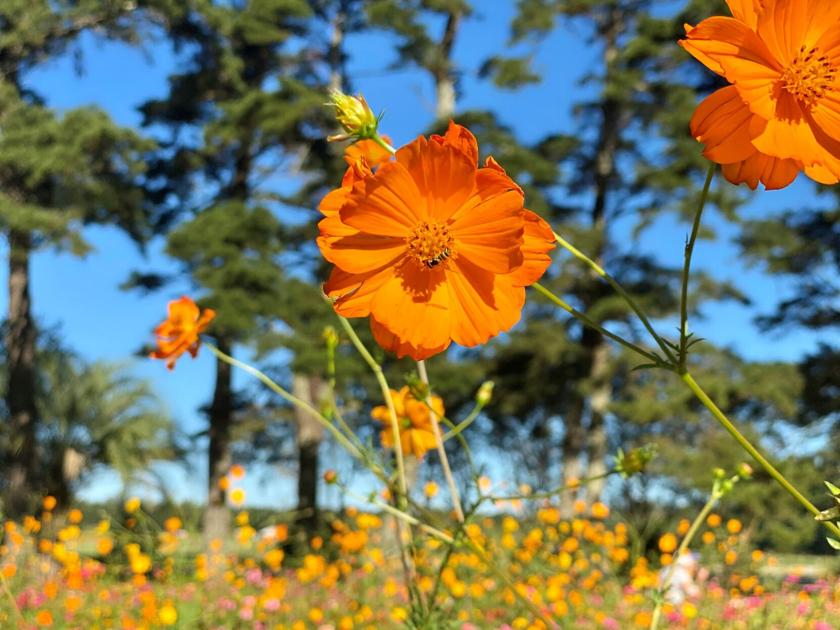LSU Garden News: Cosmos produce beautiful blooms and thrive on neglect | Home/Garden

Want a gorgeous flower that thrives on neglect? Try cosmos.
These flowers are beautiful and easy to grow. You’ll have to wait until the spring to plant seeds, but, in the meantime, you’ll probably see them blooming profusely in local gardens.
Cosmos are a true heirloom flower that will produce colorful blooms in any type of soil.
Multibranched stems hold several flower heads, each on long, individual stems. This makes them great cut flowers for vases and bouquets.
Native to the southwestern United States and Mexico, Spanish explorers brought cosmos back to Spain in the 16th century where the priests cultivated them in their mission gardens. The flowers were given the name “cosmos,” the Greek word for “ordered universe” or “harmony” because of their evenly spaced petals. Their appearance is similar to other members of the aster family with a daisylike flower head.
Cosmos blooms begin in late summer and continue until first frost. They attract bees, butterflies and hummingbirds in addition to many other types of pollinators.
Growing from seeds is simple. Plant in the spring after the danger of frost has passed.
You can rake the garden soil to make germination more successful. Cover seeds lightly with ⅛ to ¼ inch of soil. Plants will pop up in seven to 14 days, and blooms will begin in about seven weeks or in late summer, lasting throughout the fall.
When germinating, seeds will need water, but once the plants are established, you can basically forget them. They are very drought tolerant.
Tall flowers can become top heavy and topple over without support. Planting in large groups can help the flowers support one another.
For the most flower production, plant in full to partial sun in a well-drained soil. Plants are essentially pest-free and do not have any major disease issues.
One of the most common cosmos is tall garden cosmos, an herbaceous annual that reseeds itself and grows up to 4 feet with flowers of pink, purple, red and white. Some suggested varieties are Dazzler (pink), Gazebo Red (dwarf), Fizzy Pink, Picotee (dark purple), Purity (white), Rubenza (red), Sea Shells (pink, red and white) and Sonata (pink, red and white).
The second most common type is the sulfur cosmos, which can grow up to 7 feet in blooms of orange, red and yellow. Its foliage is more coarse than that of the common garden cosmos. Look for Cosmic Yellow, Sunset Orange and a dwarf variety called Bright Lights.
For an arrangement, cut flowers in the early morning or late evening. Select those that have just opened with a tight center. You can use a pair of hand pruners or scissors. Place flowers in water immediately and remove any lower leaves beneath the water line to prevent decay.
Keep flowers producing by deadheading or trimming plants back. Or you can collect seeds for next year.
When the flower head produces mature flower seeds, harvest the spiky seeds once they dry and turn brown. Carefully grab a handful of the seeds — they fall off easily — and store them in a cool, dry place. Paper envelopes and bags are the best to prevent moisture. Be sure to label the bag with the year and seed type. Harvested seeds may not be true to type, meaning they may not look like the parent plant.
Seeds are also available at garden centers and online, or you can purchase transplants in late spring for a fantastic floral fall display next year.
A cosmos is featured on the cover of the LSU AgCenter’s 2022 Get It Growing Lawn and Garden Calendar, which is filled with a year’s worth of gardening tips, plus photos selected in a statewide contest.
The calendars cost $11.95 and are available at LSUAgCenter.com/OnlineStore and at local garden centers.




